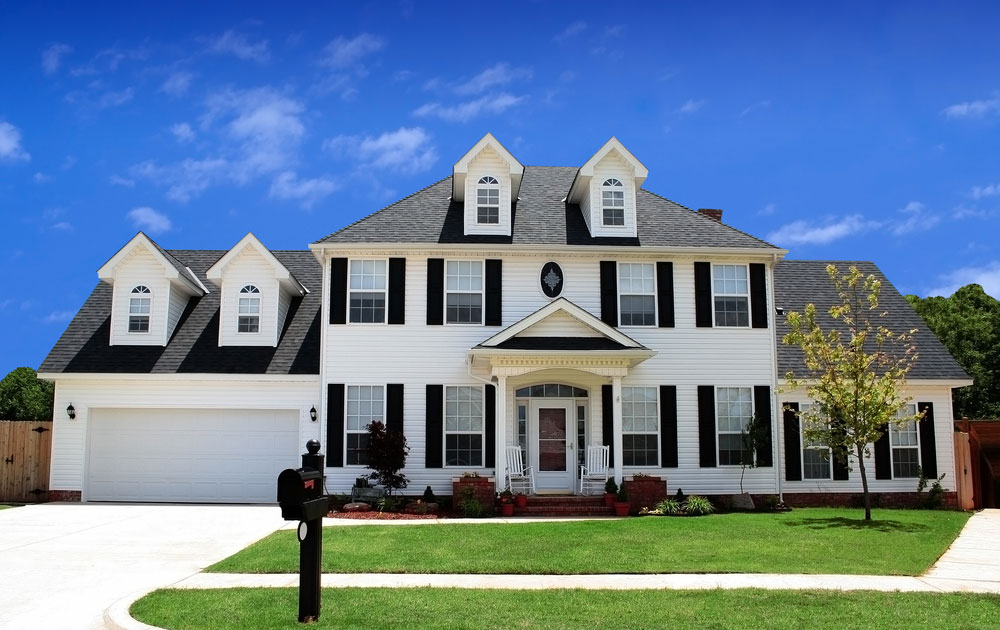
Room to Roam: Bigger Houses Fit Smaller Families
From 1975 to 2015, average square feet for new single-family households in the US has grown tremendously from 1,660 square feet to 2,687. In the chart produced by the American Enterprise Institute below, from 1975 to 2015 the square foot per person can be traced from 551 all the way up to 1,058, a result that flows from decreasing household size and exploding house size. You might be wondering, why are we building bigger and bigger houses for smaller families? In this post I discuss both supply-side and demand-side explanations for this phenomenon including improving teleworking and transportation technology, increasing utility of marginal square feet and network effects in suburban areas.

Some movement towards larger houses has sprung from technology improvements in transportation and teleworking. Improved public transportation and less expensive vehicles have lowered the cost of living in suburban areas for urban workers. Additionally, flexible schedules including flexible start-times, work from home options, and compressed workweeks have lowered the social and career costs of working outside of the city. Responding to these reduced costs of living and working outside of cities, we consider both substitution effects where workers are induced to spend more on housing with their newly freed income and income effects where these workers may purchase a “larger quantity” of their commute, in other words, live even farther away from the city where cheaper housing is available.

Despite intuition, construction technology has not led to lower cost per square foot, and inflation-adjusted price per square foot remaining relatively constant, seen in the chart above. However, advancements have improved housing quality and brought the buyer more utility per square foot purchased. Moya K. Mason details in her paper entitled Housing: Then, Now and Future how living spaces have evolved to separate their functions. The details Moya describes including separate places for schoolwork and master suites that resemble self-contained apartments have worked to increase the satisfaction or utility of each additional square foot for home buyers because they can now be used for a wider array of purposes. Higher utility per square foot of housing could certainly be a driver for the construction of larger and larger homes.
We’ve gone from having no bedrooms to having many. The middle-class bedroom has become an ever more private place with its own television, bathroom, and telephone. The master suite has become a self-contained apartment; some even having small fridges and coffee machines… The rooms themselves offer a separate place for schoolwork, and often include radios, televisions, computers, and telephones which historically have only been available centrally within homes.
Moya K. Mason, Housing: Then, Now and Future
A phenomenon known as the network effect could also come into play in growing suburban areas where larger homes can be built at lower prices. With each additional household that moves out of the city into a suburban area, the value of that suburban area is increased for all existing residents along and future newcomers. If we start with the extreme of one family moving into a previously uninhabited area – that first family must overcome the large costs including lack of an established mail system, fire department, roads, schools and limited social opportunity. However, for the second family that decides to move in to that new area, the first family has already done much of the work. For example, a system may now have been established for educate their children and the second family now has a social opportunity that the first family did not have when they moved in to the new area.
House sizes in the US have soared in an un-intuitive way over the past half-century as population has increased by around fifty percent from 219 million to 328 million while we sit on the same plot of land, the United States. Even while we are cramming in larger and larger houses into this fixed resource, technology improvements have allowed for the ability to use the space more efficiently (living outside of cities) and find more enjoyment in our homes. Because we have not reached our housing limit in much of the United States, housing size will likely continue to increase until this slack runs out.
SOURCES: